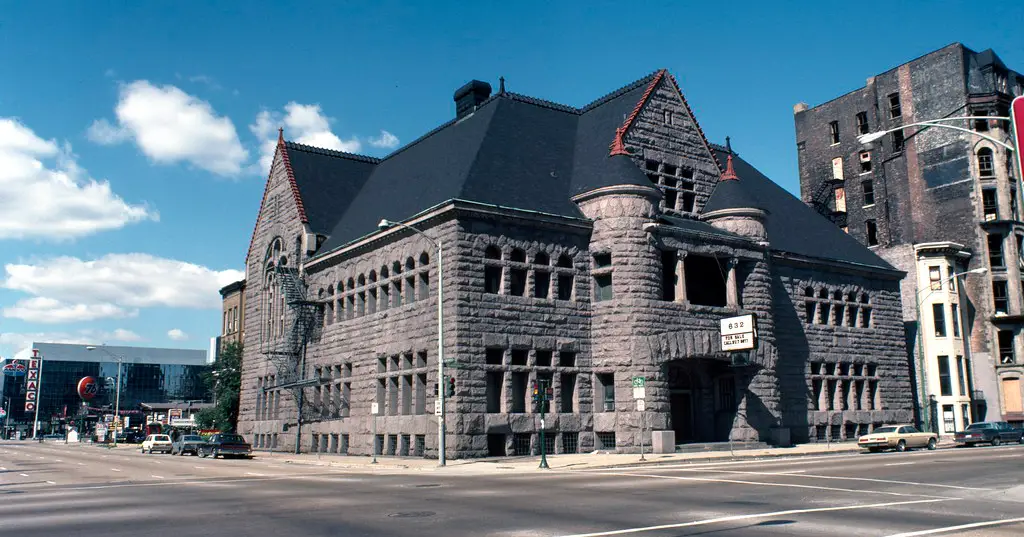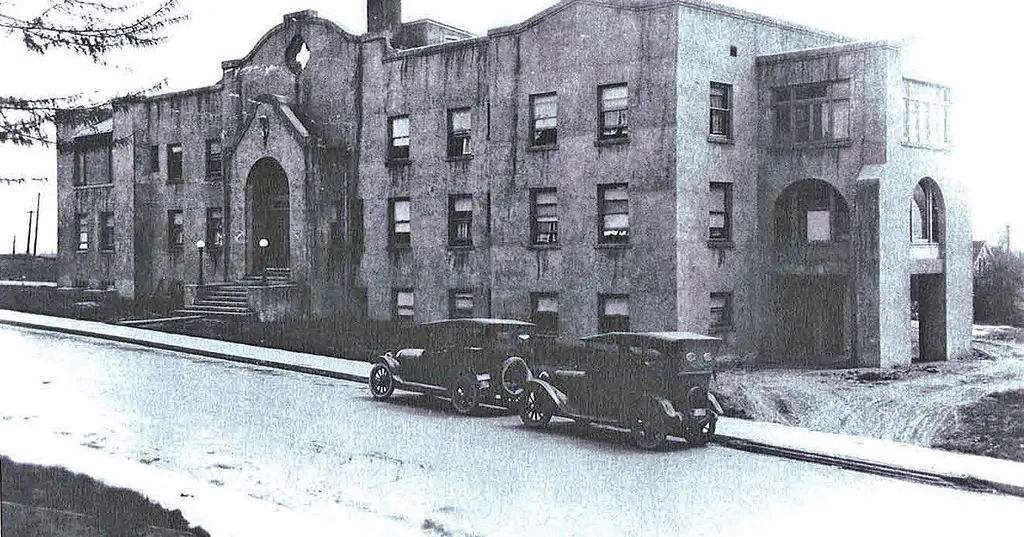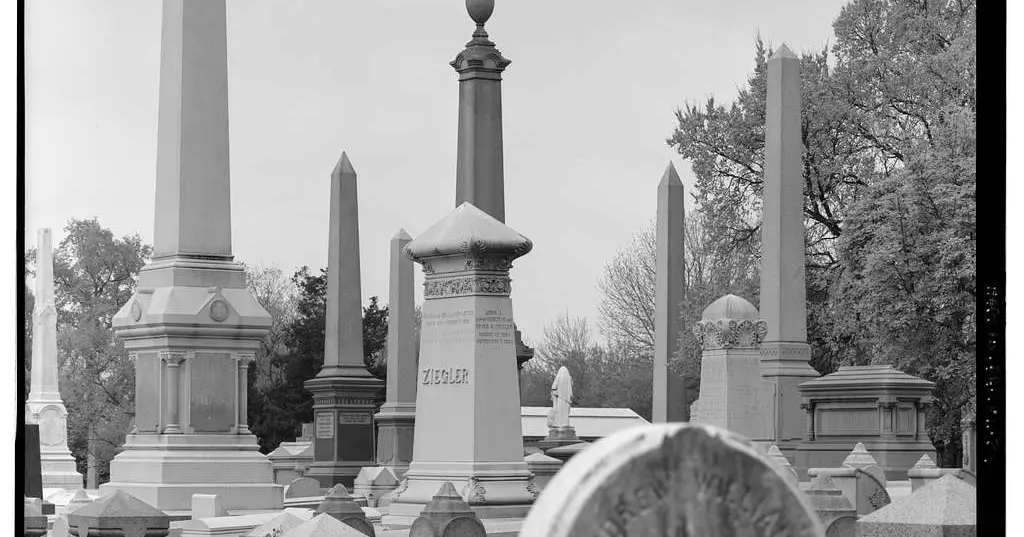Adaptive reuse, a concept that breathes new life into old buildings, has become increasingly vital in preserving the rich architectural heritage of cities like Prescott. It involves repurposing historic structures for modern use while maintaining their unique character.
This approach not only safeguards the physical remnants of our past but also ensures their continued relevance in our present and future urban landscapes. The benefits of adaptive reuse are manifold, ranging from environmental sustainability by reducing construction waste to cultural preservation and community revitalization.

In Prescott, where history echoes through the walls of its aged buildings, adaptive reuse stands as a testament to the city’s commitment to honoring its past while innovatively moving forward.
Historical Context
Prescott’s rich historical tapestry is deeply interwoven with its architectural landscape, making the adaptive reuse of its historic buildings a journey through time. The city’s architectural heritage, featuring a diverse array of styles from Victorian to neoclassical, tells the story of its evolution from a frontier town to a modern community.
Each building holds within its walls narratives of the past, from the gold rush era to the development of the railroad. This historical context is crucial in understanding the importance of adaptive reuse in Prescott.
It’s not just about preserving buildings; it’s about maintaining a tangible connection to the city’s history and heritage, ensuring that the legacy of Prescott’s past continues to enrich its present and future.
Prescott’s Architectural Heritage
Prescott, a city with a rich tapestry of history, boasts an array of historic buildings that stand as testaments to its past. The architecture in Prescott is a melting pot of styles, reflecting various periods and influences.
From the Victorian-era homes to the neoclassical courthouse, each structure tells a unique story of the city’s development and the people who shaped it. The preservation of these buildings is not just about maintaining structures; it’s about keeping alive the stories and the heritage they represent.
Challenges in Preservation
However, the journey of preservation is fraught with challenges. Environmental factors like extreme weather conditions pose a constant threat to the integrity of these historic structures.
Additionally, many buildings suffer from structural deterioration due to age and neglect, necessitating significant restoration efforts. Financial constraints further complicate matters, as restoration and adaptive reuse often require substantial investment. These challenges make the task of preserving Prescott’s architectural heritage both crucial and complex.
Conceptual Framework
The conceptual framework for adaptive reuse in Prescott is anchored in the MECE (Mutually Exclusive, Collectively Exhaustive) principle, offering a structured approach to transforming historic buildings.
This methodology involves dissecting the process into distinct, non-overlapping categories – from assessing structural integrity and historical value to considering community impact and legal compliance.
By systematically addressing each facet of adaptive reuse, this framework ensures a comprehensive and thorough approach to preservation projects.
It allows for a clear understanding of the diverse challenges and opportunities presented by each building, ensuring that every aspect of the building’s history, architecture, and potential future use is carefully considered and integrated into the adaptive reuse plan.
This structured approach is pivotal in ensuring that Prescott’s architectural heritage is not only preserved but also thoughtfully adapted to meet contemporary needs.
The MECE Approach to Adaptive Reuse
The MECE (Mutually Exclusive, Collectively Exhaustive) framework is an effective tool for systematically addressing the complex issue of adaptive reuse in historic buildings. This approach involves breaking down the problem into distinct, non-overlapping categories (mutually exclusive) that together cover all possible scenarios (collectively exhaustive).
Applying this framework to adaptive reuse, we can categorize challenges and solutions into clear, manageable segments, ensuring that all aspects of a project are considered without overlap or omission.
Application in Architectural Preservation
In the context of architectural preservation in Prescott, the MECE framework can be utilized to categorize aspects like structural integrity, historical significance, legal compliance, and community impact.
This methodical approach ensures a comprehensive assessment and strategy for each project, balancing the need to preserve historical integrity with the practicalities of modern use and sustainability.
Case Studies
In Prescott, several case studies of adaptive reuse stand as exemplary models of how historical buildings can be successfully repurposed. These include projects like the transformation of old industrial buildings into modern residential lofts, the conversion of a 19th-century school into a community arts center, and the revitalization of historic downtown structures into vibrant retail and office spaces.
Each case study showcases unique challenges and innovative solutions, ranging from structural reinforcements to creative redesigns that respect the buildings’ original character. These projects not only highlight the practical aspects of adaptive reuse but also underscore its impact on preserving Prescott’s cultural heritage and stimulating local economic growth.
Through these examples, Prescott demonstrates how adaptive reuse can be a sustainable approach to urban development, merging historical preservation with contemporary needs.
Notable Projects in Prescott
In Prescott, several adaptive reuse projects stand out, showcasing how historic buildings can be given new life while preserving their past. For instance, the transformation of the old Prescott High School into a vibrant community center serves as a prime example.
This project not only preserved a historic structure but also revitalized it into a space that serves contemporary community needs.
Challenges Faced and Overcome
These projects, however, did not come without their challenges. The high school conversion, for instance, faced issues related to structural reinforcement and modern code compliance.
Overcoming these obstacles required innovative engineering solutions and collaborative efforts between preservationists, architects, and the local government. These case studies highlight the potential and challenges of adaptive reuse in Prescott, offering valuable lessons for future projects.
Technical Aspects
The technical aspects of adaptive reuse in Prescott are both challenging and critical, requiring a sophisticated blend of historical preservation and modern engineering.
Key considerations include the structural integrity of aging buildings, the integration of contemporary systems like electrical, plumbing, and HVAC, and the application of modern building materials that are sympathetic to the original construction.
Specialists in historical architecture work alongside engineers and builders to ensure that these venerable structures are not only preserved but also meet current safety standards and functional requirements. This technical finesse is essential for successfully transforming historic buildings into spaces that are both usable in the present day and respectful of their storied pasts.
Structural Considerations
Adaptive reuse of historic buildings in Prescott requires meticulous attention to structural integrity. Professionals need to thoroughly assess the condition of foundations, walls, and other structural elements to ensure safety and longevity.
Innovative engineering solutions are often required to reinforce old structures while preserving their historical essence. This delicate balance between preservation and modernization is a key challenge in the adaptive reuse of historic buildings.
Sustainability in Reuse
Sustainability is another critical aspect of adaptive reuse. This approach not only preserves historical structures but also contributes to environmental conservation by reducing the need for new construction materials and waste generation.
Incorporating energy-efficient systems, using sustainable materials, and optimizing natural light are some ways to enhance the sustainability of these projects. These measures not only protect the environment but also reduce long-term operational costs, making adaptive reuse a practical solution for the future.
Design Perspectives
In the adaptive reuse of Prescott’s historic buildings, design perspectives play a crucial role in bridging the past with the present. Architects and designers are challenged to honor the original character and historical significance of these buildings while infusing them with contemporary functionalities and aesthetics.
This delicate balance requires a deep understanding of both historical architecture and modern design principles. Innovations in space utilization, incorporation of sustainable materials, and integration of modern technologies are all achieved with a keen eye on preserving the unique story each building tells.
These thoughtful design approaches ensure that the transformed spaces not only meet current needs but also continue to celebrate and reflect Prescott’s rich architectural heritage.
Balancing the Old with the New
One of the most fascinating aspects of adaptive reuse is how architects blend historical features with contemporary design. This balance is crucial in maintaining the building’s character while ensuring it meets modern needs.
Respecting historical aesthetics means preserving significant architectural elements, like original facades or interior features, while seamlessly integrating new designs and technologies.
Innovative Use of Space
Adaptive reuse projects in Prescott have shown remarkable creativity in space utilization. These projects often involve converting spaces designed for one purpose into something entirely different. For example, turning a former factory into residential lofts or a historic church into a community art center requires imaginative spatial reconfiguration.
These transformations not only preserve historical buildings but also provide them with a new lease on life, contributing to the city’s dynamic urban landscape.
Legal and Regulatory Framework
The adaptive reuse of historic buildings in Prescott is guided by a comprehensive legal and regulatory framework that ensures these projects respect both the city’s heritage and current standards.
This framework encompasses local zoning laws, building codes, and preservation ordinances, which collectively ensure that the modifications to historic structures are safe, appropriate, and respectful of their original character.

Navigating this framework requires careful planning and collaboration with regulatory bodies, ensuring compliance while also honoring the architectural and historical integrity of the buildings. Additionally, understanding and leveraging available incentives, like tax credits or grants for historic preservation, can be crucial for the feasibility and success of adaptive reuse projects in the city.
Zoning and Compliance
Navigating the legal and regulatory aspects is a critical step in the adaptive reuse process. In Prescott, this means complying with zoning laws, building codes, and historical preservation standards.
These regulations ensure that the modifications to historic buildings are safe, respectful of their heritage, and beneficial to the community. Understanding and adhering to these legal requirements is essential for the successful completion of any adaptive reuse project.
Incentives and Funding
Financial incentives and funding play a significant role in the feasibility of adaptive reuse projects. Government grants, tax incentives, and private investments are crucial for covering the high costs associated with these projects.
In Prescott, identifying and securing these financial resources is a vital step in ensuring that adaptive reuse projects not only start but also reach completion.
Community Impact
The adaptive reuse of historic buildings in Prescott has a profound and positive impact on the community. By revitalizing and repurposing these structures, the projects breathe new life into neighborhoods, often becoming catalysts for broader urban renewal and economic revitalization.
They foster a sense of pride and continuity, linking the present community with its historical roots. Additionally, these projects often create communal spaces – like galleries, markets, or centers for learning – that serve as new social and cultural hubs, enhancing the quality of life for residents.
This approach to preservation and development not only protects architectural legacies but also strengthens the social fabric, creating a more connected and vibrant community in Prescott.
Engaging the Public
The adaptive reuse of historic buildings in Prescott is not just an architectural endeavor; it’s a community project. Engaging the public in these projects is crucial for their success. This involves creating awareness about the historical significance of these buildings and involving the community in the planning process.
Public exhibitions, workshops, and open forums can be effective ways to garner community support and gather valuable input, ensuring that the projects serve the broader community needs and preserve the collective memory of the city.
Economic Benefits
Adaptive reuse projects in Prescott also bring significant economic benefits. They can boost local economies by attracting tourism, fostering local businesses, and creating job opportunities. Restored buildings often become hubs for cultural and commercial activities, drawing both locals and tourists.
This revitalization not only enriches the urban fabric of Prescott but also contributes to its economic sustainability.
Ethical Considerations
In the realm of adaptive reuse, ethical considerations are paramount, particularly in a historically rich context like Prescott. It’s essential to approach each project with a deep respect for the original architecture and the cultural narratives it embodies.
This means making decisions that honor the historical integrity and significance of buildings while also considering the impact on the community. Ethical adaptive reuse involves a careful balancing act between modernization and preservation, ensuring that the transformed spaces not only serve current needs but also respectfully acknowledge and preserve the past.
Moreover, inclusivity and accessibility should be at the forefront, ensuring that these rejuvenated spaces are welcoming and usable for all members of the community, thus creating a harmonious blend of history, functionality, and social responsibility.
Cultural Sensitivity
In preserving and repurposing historic buildings, cultural sensitivity is paramount. It’s essential to respect and honor the historical and cultural significance of these structures.
This involves careful consideration of the original use, historical context, and cultural values associated with each building. Adaptive reuse should not only be about physical preservation but also about maintaining the spirit and stories that these buildings embody.
Inclusive Design Approaches
Adaptive reuse projects must also be inclusive, ensuring accessibility and usability for all members of the community.
This means considering diverse needs and making necessary modifications to make these historic buildings accessible and welcoming to everyone, regardless of age, ability, or background. Inclusivity in design strengthens community ties and ensures that the rebirth of these buildings is beneficial to all.
Future Prospects
Looking ahead, the future of adaptive reuse in Prescott is bright and promising. As awareness and appreciation for sustainable practices and historical preservation grow, so too will the innovative approaches to revitalizing the city’s architectural heritage.
Emerging technologies and creative design solutions are expected to play a pivotal role in transforming more historic structures into functional, modern spaces.
This forward-thinking approach not only safeguards Prescott’s past but also paves the way for a dynamic, culturally rich urban future. The continued commitment to adaptive reuse promises not just the conservation of history, but the creation of a legacy that future generations will cherish and build upon.
Emerging Trends in Adaptive Reuse
The field of adaptive reuse is constantly evolving, with new trends and technologies emerging. In Prescott, staying abreast of these developments is essential for future projects.
This includes exploring innovative materials, sustainable practices, and cutting-edge design approaches that can enhance the efficiency and appeal of adaptive reuse projects. Keeping an eye on global trends and learning from successful projects elsewhere can inspire and inform local initiatives.
Prescott’s Vision for Future Projects
Looking forward, Prescott has the opportunity to become a model city for adaptive reuse. The vision for future projects includes not only the preservation of more historic buildings but also the integration of these structures into the city’s growth and development plans.

This vision encompasses a commitment to sustainability, community engagement, and innovation, ensuring that adaptive reuse remains a key component of Prescott’s urban development strategy.
FAQs
In this section, we will be delving into some of the most common inquiries and curiosities that surround our topic.
What is Adaptive Reuse and Why is it Important in Prescott?
Adaptive reuse refers to the process of repurposing old buildings for new uses while preserving their historical significance. In Prescott, this is particularly important because it allows the city to maintain its rich architectural heritage and cultural identity while adapting to contemporary needs and uses. This approach not only preserves the city’s unique character but also promotes sustainable urban development.
How Does Adaptive Reuse Benefit the Community?
Adaptive reuse benefits the community in several ways. Firstly, it helps in preserving historical landmarks, which are a source of local pride and identity. Secondly, it often leads to the revitalization of underutilized or abandoned areas, bringing new economic activity and vibrancy to neighborhoods. Additionally, it can provide the community with new facilities and services, such as cultural centers, libraries, or housing, enhancing the quality of urban life.
Are There Any Environmental Advantages of Adaptive Reuse?
Yes, adaptive reuse offers significant environmental advantages. By repurposing existing structures, it reduces the need for new construction materials, thereby lowering carbon emissions associated with building production. It also minimizes construction waste and the need for land clearance, helping to conserve natural resources. This makes adaptive reuse a sustainable and eco-friendly approach to urban development.
Can Modern Amenities be Integrated into Historically Significant Buildings?
Absolutely. One of the core goals of adaptive reuse is to seamlessly blend modern amenities and technologies with the historical character of buildings. This often involves innovative architectural solutions to incorporate contemporary features such as energy-efficient systems, modern lighting, and accessibility upgrades, while respecting and preserving the building’s original aesthetics and structural integrity. This fusion of old and new ensures that historic buildings can meet current standards of comfort and functionality.
Conclusion
In conclusion, the journey of adaptive reuse in Prescott is a multifaceted endeavor, intertwining history, architecture, sustainability, and community. It’s a delicate balancing act of preserving the past while embracing the future.
These efforts not only protect the architectural treasures of Prescott but also contribute to the city’s economic and cultural vitality. The adaptive reuse of historic buildings is more than a preservation effort; it’s a testament to Prescott’s commitment to its heritage and its vision for a sustainable, inclusive future.



Leave a Comment
You must be logged in to post a comment.